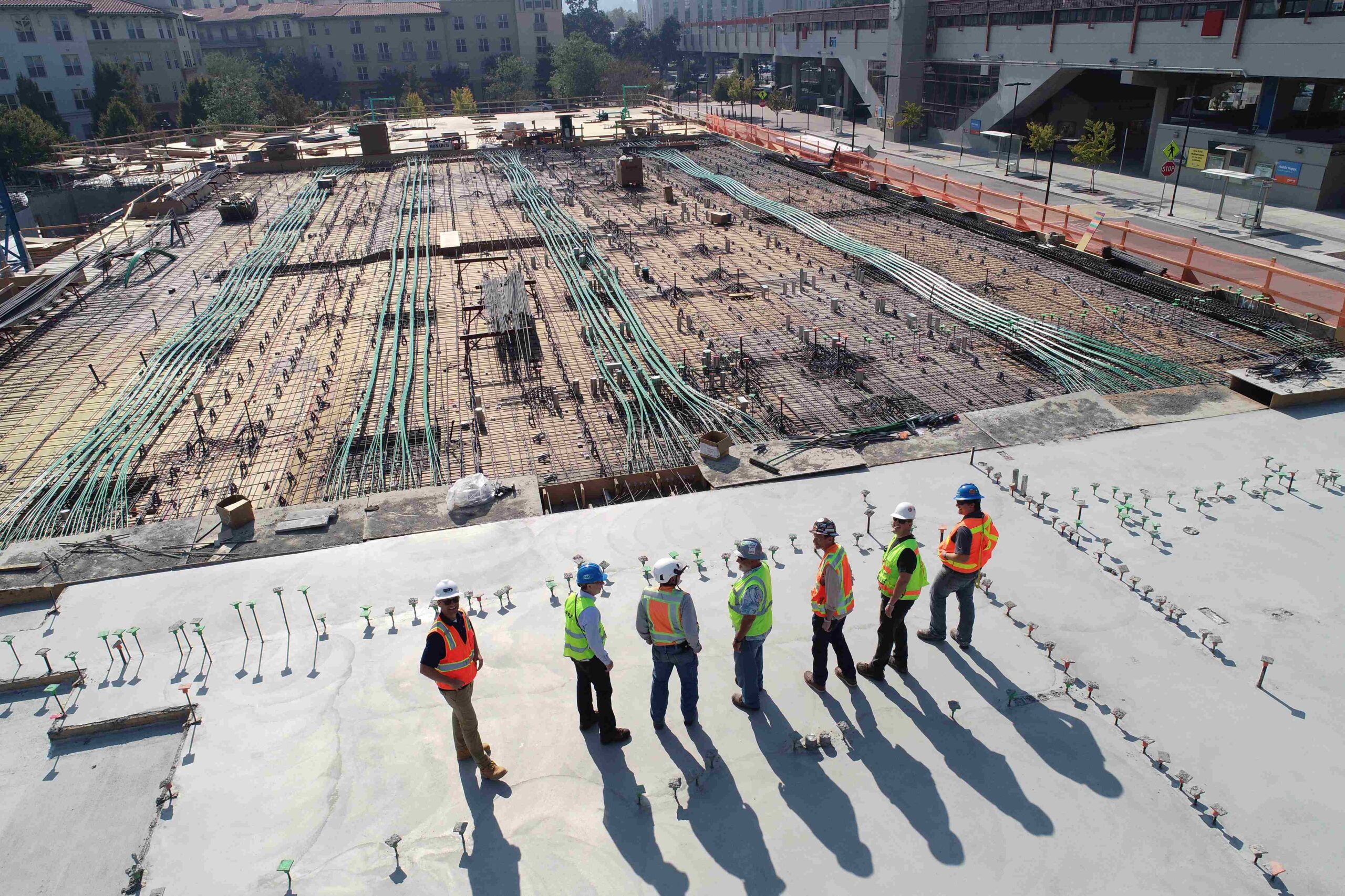by Adrian McClinton
13 April 2023
A look back at 2021 shows that the construction industry has been on a rollercoaster ride over the past year. The Office of National Statistics (ONS) reports that annual construction output increased by a record 12.7% in 2021 compared with 2020, mainly as a result of the coronavirus pandemic contributing to a very weak 2020.
This increase comprised of rises in both new work (11.2%) and repair and maintenance (15.5%). At a sector level, record annual growth increases were seen in infrastructure (30.4%), private housing repair and maintenance (20.2%) and non-housing repair and maintenance (14.1%).
However, the private commercial sector saw an annual decline (6.8%). This is the fourth successive decline in annual growth for private commercial new work.
Despite the overall growth, the industry dealt with many difficulties.
Brexit and supply chain issues
While the UK-EU Trade and Co-operation Agreement has protected trades from further tariffs, there has been an increase in “red tape” and border checks, which has slowed the movement of construction supplies.
Shortages of building materials resulted in price increases for many construction products, which made projects more expensive for everyone involved and caused a lot of disruption in an industry where tight margins are common.
According to the Department for Business, Energy and Industrial Strategy (BEIS), materials costs climbed by 23% since August 2020. Timber prices increased by 50% between January and May 2021, with The Timber Price Index reaching 92.13 in May.
BEIS data showed that steel costs in October 2021 were 72.6% higher than October 2020, and steel prices continued to increase throughout 2021.
Skills shortage
In June 2021, the ONS reported that the number of EU workers seeking jobs in the UK had dropped by 17%. Delivery remained a problem due to the lack of HGV drivers and the worker shortage was made more challenging by the employment visa framework brought in at the start of 2021, as many construction workers were classified as unskilled and did not meet the minimum salary threshold to secure a visa to work in the UK.
Our Predictions for 2022
Materials and labour shortages
Unfortunately, materials, labour and skills shortages are likely to continue for early 2022 as the industry looks to increase efficiencies, reduce waste and find new supply chains for materials.
Whilst the 2021 Budget introduced a range of measures aimed at incentivising employers to create new apprenticeship roles within the industry, it will take time for training to take place to fill the labour and skills shortages, such as training HGV drivers, for apprentices to become qualified, and to attract new young talent.
However, there is light at the end of the tunnel as the Construction Skills Network (CSN) forecasts UK construction output to grow at an average rate of 4.4% across 2022. This will mean the construction sector will need to recruit an extra 43,000 workers.
CSN predicts most English regions will experience an increase in construction workers by 2025, with East Midlands (1.7%) and West Midlands (1.4%) forecast to lead demand. Scotland (1.4%) and Wales (0.7%) are also predicted to fare well. The only region forecast to see a slight decline in workforce is the North East (-0.1%).
A move to Modern Methods of Construction
One area predicted to grow and address the struggles faced by the industry is the use of Modern Methods of Construction (MMC). Key MMC methods, like offsite manufacturing techniques and using natural materials, bring many benefits. They often achieve faster completions, lower carbon impact, increased safety, less waste and less weather damage.
The government has stated that a significant proportion of homes must be built using MMC in order to meet their target to deliver 300,000 homes annually, and housebuilder Barratt has reported that 25 per cent of the 12,243 homes built by the end of its most recent financial year used MMC.
MMC has the potential to create tens of thousands of jobs for UK workers and it is estimated that if 75,000 modular homes are constructed per year it could create 50,000 new jobs. MMC also offers a route to greener buildings, which could make the sector more attractive to younger workers, thus helping to alleviate the skills shortage within the sector.
Environmental impact and development
The UK government’s policy of reducing the country’s greenhouse gas emissions to Net Zero by 2050 will impact the construction industry. Businesses across the UK will need to meet their Net Zero objectives.
From 1 October 2021, it became mandatory for all companies bidding for government contracts worth more than £5,000,000 a year to commit to achieving net zero emissions by 2050. Under the new rules, in-scope organisations need to produce a carbon reduction plan detailing where their emissions come from and what environmental management measures they have in place.
Upcoming Legislative Changes
The Building Safety Bill
The Building Safety Bill is likely to be given Royal Assent in 2022. The new rules apply to buildings that are at least 18 metres high or have at least seven storeys and have at least two residential units. Hospitals and care homes with this height threshold during design and construction are also included.
The Bill will strengthen the regulatory system for building safety and will affect all parties who design, build, manage or occupy ‘higher-risk’ buildings. The Bill will bring in new regulations concerning fire safety and the quality of products used in construction. Responsibility and accountability for buildings will not end when the construction has been completed, but will continue throughout the buildings’ life-cycle.
Those accountable for occupied buildings within scope of the new regime will have to take all reasonable steps to reduce the risk of fire spread or structural failure.
Fire Safety Act 2021
This Act was made law on 29 April 2021, but is not yet in force.
The Act makes amendments to the Regulatory Reform (Fire Safety) Order 2005 (“the FSO”) and extends the provisions of the FSO for multi-occupied residential buildings to the building’s structure, external walls (including doors or windows in external walls, and anything attached to the exterior of those walls, e.g. balconies and cladding) and any common parts, as well as all doors between the domestic premises and common parts.
Building owners or managers of these buildings are required to consider fully and mitigate the fire safety risks of any external wall systems and front doors to individual flats.
The Act also allows the Fire and Rescue Service to enforce against non–compliance
Residential Property Developer Tax
This new tax will apply from 1 April 2022 and will introduce a new 4% tax for companies or groups of companies undertaking UK residential property development with annual profits in excess of £25 million.
The tax forms part of the government’s attempt to end unsafe cladding, provide reassurance to homeowners and support confidence in the housing market.
Following Grenfell and the significant costs associated with the removal of unsafe cladding, the government believes this new tax is a fair contribution from the largest developers in the sector to help fund unsafe cladding removal.
Changes to UK Building Regulations
June 2022 will bring about changes to Part F (ventilation) and Part L (fuel and power) of the UK building regulations, as well as the introduction of the new Building Regulation and Approved Document O to mitigate the risk of overheating in new homes.
These changes impact both new homes and existing homes and will detail new enhanced energy and ventilation standards for non-domestic buildings, as well as mitigate against overheating in residential buildings.
The government will invest £6.6 billion into improving the energy efficiency of buildings and these changes are predicted to impact how buildings will be constructed and will likely lead to the construction of efficient non-domestic buildings that are zero carbon-ready.
Sectors Likely to Grow in 2022
- Industrial sector – To keep pace with the rise in online shopping, many new warehouse and logistics facilities are predicted to be constructed in 2022.
- Health sector – The UK government has pledged £4.2 billion of funding for the NHS. The money will be used to construct 40 new hospitals by 2030 and to give over 70 existing hospitals an upgrade. In the next four years, the government will also be spending £1.5 billion on building modern ‘surgical hubs’.
- Infrastructure – Road infrastructure projects and schemes related to HS2 are expected to drive activity in this sector for the next two years.
- Green sector – In pushing to reach Net Zero, the UK government’s 10 point plan includes growing the UK’s offshore wind offering (such as the £3 billion Sofia Wind Farm expansion in the North Sea), developing new nuclear power facilities, rolling out electric vehicle charging infrastructure, investing billions of pounds in enhancements and renewals of the rail network, investing in greener buildings (which includes upgrading homes, aiming to install 600,000 heat pumps per year by 2028, and providing energy efficiency funding), as well as £5.2 billion being invested in building flood and coastal defences.
- Housebuilding – House prices rose faster than every other economic metric in 2021, and areas such as the South East of England in particular remain in desperate need of housing. As the year progresses, there is a forecasted growth in project starts for private housing of 6% in 2022, and 5% in 2023.
Speak with us

